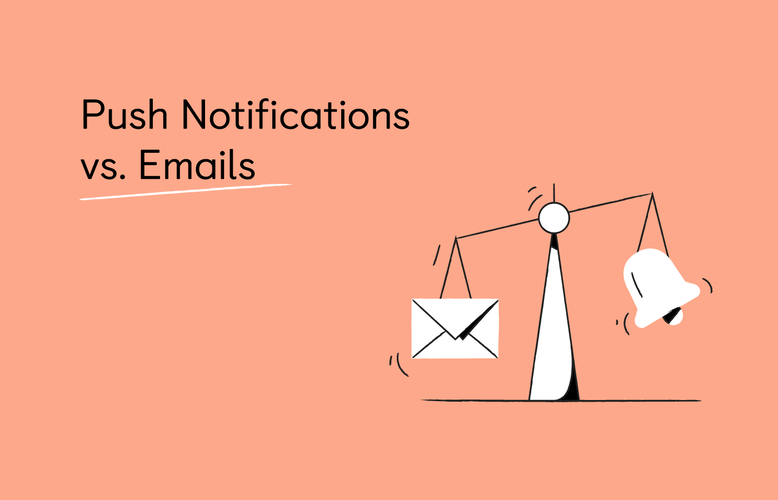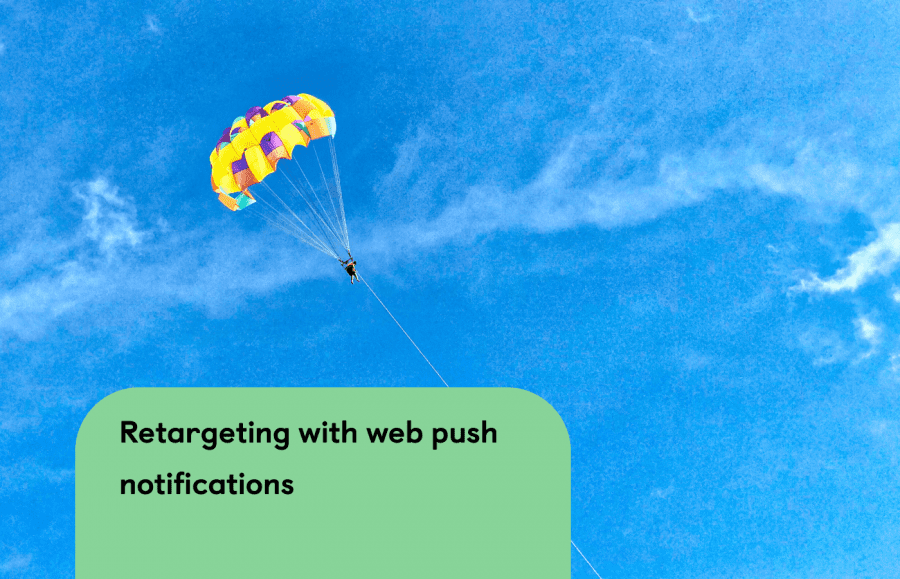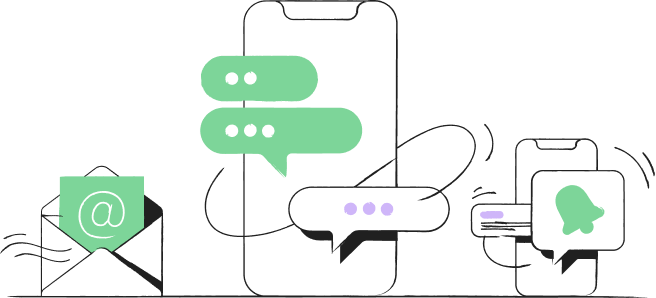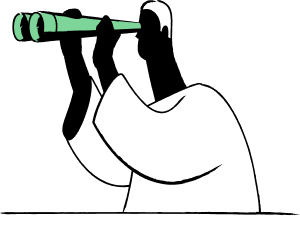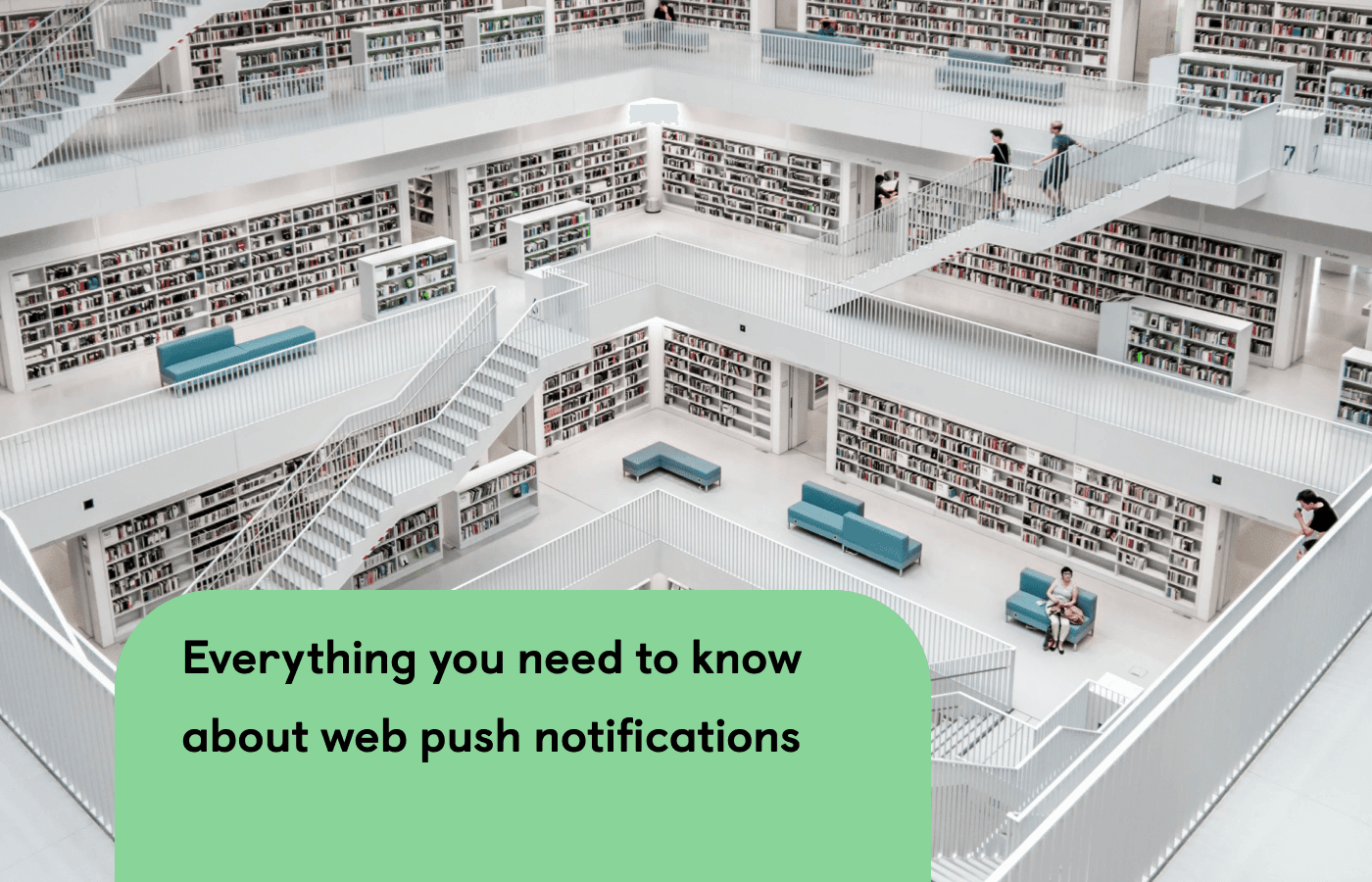
Navigation menu
Want to make the most of your Shopify business?
Push notifications, or pushes, offer a simple and instant way of getting your message out to your customers. They work across a number of devices, computers, macs, android tablets and mobile devices and require no mobile app.
The aim of this post is to give you the heads up and a bunch of practical tips on using website push notifications in ecommerce.
Here's what we'll cover:
- Difference Between Browser Push Notifications and Mobile Push Notifications
- 3 Reasons Why Website Push Notifications Are Great for Ecommerce
- How to Build a List of Push Subscribers
- How to Convert Email Subscribers to Push Notification Subscribers?
Also, consider these great reads for later:
- Customer Account Pages: How They Drive Repeat Purchases
- Retention Marketing Guide [8 Customer Retention Marketing Strategy Examples]
- How to Use Email, SMS, and Push Notifications to Build Customer Loyalty
Firepush offers dedicated support and FREE consultations to find right strategy for you
Book my demoDifference Between Browser Push Notifications and Mobile Push Notifications
One word: reach.
While mobile app push notifications are limited to mobile devices and tablets, website push notifications also cover desktops, meaning that web push notifications deliver an extra 32% more potential customer engagemen
3 Reasons Why Website Push Notifications Are Great for Ecommerce
First, they allow to reach customers directly.
What your shop gets with website push notifications is a simple, direct and immediate way to send tailored messages to your customers. Yep we’re talking about messages that react to your customer’s purchases and buying. Let’s look at a couple of popular message types to show you how this works.
- Delivery push. Send immediate up to the minute updates to your customers on the delivery status of their order.
These pushes communicate trust, engagement and real commitment to service.
Put yourself in your customer's shoes. You’ve bought the item and now you’re waiting for it to arrive. Delivery Updates really come through here.
- Price drop Pushes. Everybody loves lower prices. Price drop pushes are sent to subscribers based on what they have told you they want. What better way to drive sales than by showing your customer that not only do you know what they like, you also want to give it to them for a lower price.
Need more convincing? The click rate for Price Drop pushes is a huge 24%.
Scheduling is key here. As this is not an automated push, you need to make sure that you remember to send these out. The best way to do this is by using your calendar.
And with click rates of 915%, they can really really help boost your sales.
As for the second reasons, your website push notifications can be segmented to maximise sales.
Here are some great examples:
- Automated Upsell pushes.
Upselling is the key to making your store really work for you. By being able to make instant recommendations or suggestions to your customers based on their purchase history or browsing habits, you’ll be able to maximise your sales potential.
Not only that, you’ll be forging a stronger, more tailored bond with your customer.
- Recover cart abandonment notifications. We all know that cart abandonment is a huge issue in online sales. The staggering statistic is that 68.63% of all carts are abandoned, crowding up the internet with a mountain of missed sales.
So the real task of good directed emarketing is to transform those potential sales into real sales. Emails have been able to achieve a recovery rate of 4-5%. Not bad.
Push Notifications, on the other hand, can give nearly double that, 7%. Even better. So by using cart abandonment pushes, you will be able to turn some of those maybe sales in cart abandonment limbo into real profits.
- Promo Pushes.
You can use segmentation to send mass promo pushes to your subscribers based on previous purchases, location, device etc. This will give you great traction to take advantage of impulse buys and focus promotions on the right people at the right time. They are cost effective.
On top of that, there's no app required.
There is no need to build a quality app, website push notifications are a ready made, ready to go solution that can be added to your store with just one click.
What’s more with all providers offering 24/7 support and regular updates there’s no headache, and, of course no tricky ROI that might be hard to square up.
Want to see these push notifications in action? Here are 6 Examples of Push Notifications from Ecommerce Brands.
How to Build a List of Push Subscribers
To make website push notifications work, you need users to send them to. Growing your subscriber base does take time, but it's an investment that will pay off in increased sales.
Here’s how to do it.
Auto prompt messages
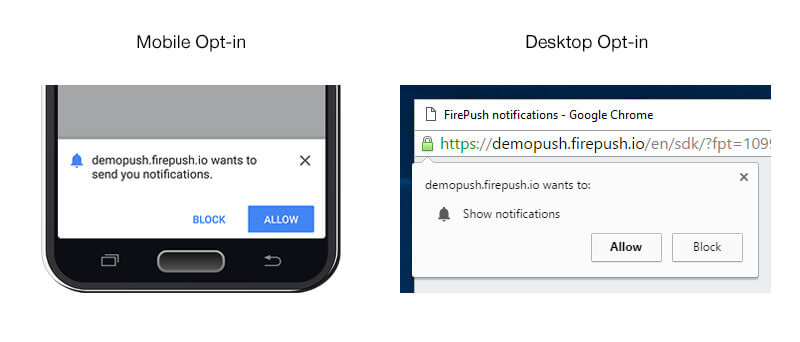
These sign up messages are nice and simple and can generate subscription rates of upwards of 30%
Once set up, every time a customer enters your site, they appear as an automatic prompt at the top of the page. Although they carry no actual message, and no indication of what the user will be sent, it’s clear from the results that users feel inclined to sign up.
What is not so great is that because the user has no real idea of what they have signed up for, the click rate is less than stellar, at around 2%.
Whether or not these auto prompt messages will go the way of the spam email and be engineered out of future browser versions is up for discussion, but for now, they are an easy way to build subscribers.
Just remember. Subscribing people blind will in the end never really benefit your store. Time and again we see that what keeps people coming back is not just good prices, but good personalized service. And that doesn’t come through spam.
If you are intending to use auto prompts as a way of building your subscriber base makes sure that once your customer has subscribed to your pushes, you make the most of their engagement by sending pushes that deliver the value and service they are after.
Sign up boxes
Sign up boxes are basically messages that invite users to sign up to receive specific pushes.
Although a little less effective in terms of delivering solid subscriber numbers, they have the real value of guaranteeing that each subscription made by a user through them reflects a true customer need.

When you are starting out. It is really important that you understand how valuable each sign up box is for driving subscribers.
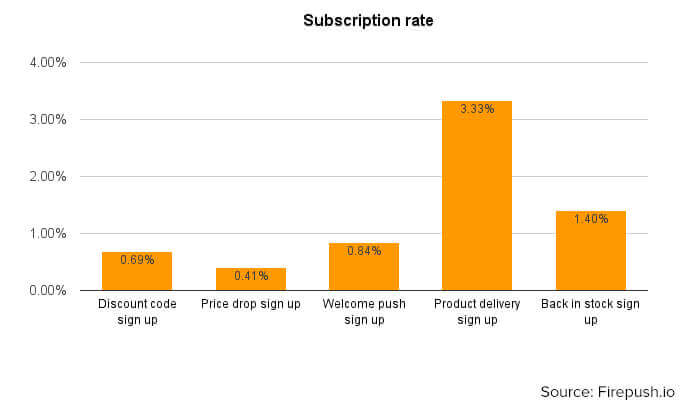
The basic and most important first rule is this: sign up boxes which reach more people, will, of course, deliver more subscribers. So a Price Drop sign up box is great as it will be shown on every product page of your site.
You can also incentivize your customers to subscribe to your pushes by using Discount code sign up boxes. Not only are these sign ups very visible as they appear on your landing page, they also have the added allure of a freebie.
Other Sign Up Boxes will have far less potential subscribers because they only appear on certain pages of your website. A good example here would be Product Delivery sign up boxes. They are less visible as they only appear on in cart pages at the point of purchase, but remember they do have the benefit of being more specific to your customer. This means they will deliver a higher conversion rate, but a smaller number of subscribers.
Back in stock sign up box is also quite limited in its reach, as most shops aim to have a full inventory at all times. So the amount of subscriptions they pick up is small. The only thing to bear in mind here is that if there is a popular item that you know is out of stock, you can use this sign up to collect subscribers who are truly engaged with your products.
The basic point being, when it comes to building a base of push subscribers, you need to make the best use of all of the sign up boxes you have available. You can only maximise your user base, if you maximise the potential that your sign up boxes can offer you.
More data on what signup boxes work best.
Let’s now have a closer look at some data on the subscription rates to some popular Sign Up boxes. This will give you a better idea on subscription tendencies which you can use for further segmentation.
Having a more definite idea of segmentation will really benefit you later on when you have got your Pushes up and running and you start upselling.

Price Drop: Female customers are more likely to respond and subscribe to Price Drop Sign UpBoxes.
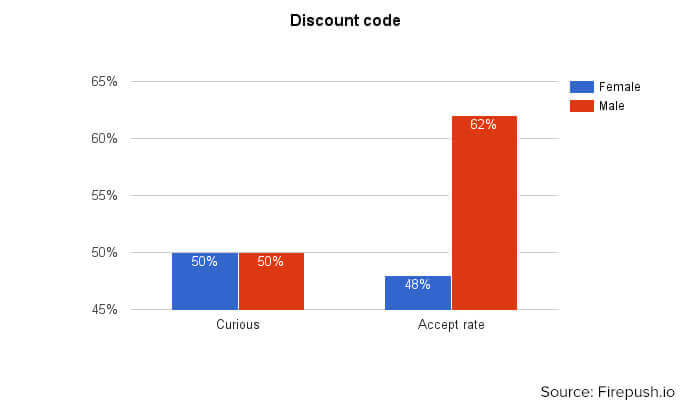
Discount: Both men and women are up for a discount, but men are far more likely to click through to accept and subscribe.

Delivery: Interest is high for delivery updates, so these sign boxes are a good way of driving subscriber numbers. Both men and women are keen to track, but men are more likely to sign up for such pushes.
ELO, a Pakistan based branded garments Shopify Plus store has generated over $300,000 in revenue by employing a web push notification strategy. Read ELO case study to find out more.
How to Convert Email Subscribers to Push Notification Subscribers?
You can send a message to all your existing email subscribers offering a one off discount or gift in return for subscribing to your pushes..
Let’s look at one recent case study to see how it works
One Shopify music store, Mostly Music, a retailer of specialist music, sent two emails to its 55K users. 
The first email introduced the offer, and the second was designed to boost uptake. The offer was simple: the user received a free track in turn for their subscription to the store’s Push Notifications. Of the 55k emails that were sent, 2182 were clicked on, generating a 3.9% click rate.
On top of that, of the 2182 that clicked on the email, a huge 67.5% subscribed to receive Mostly Music Push Notifications. Which Web Push Notification apps are available for your Shopify
Website Push Notifications: Conclusion
If we look at Google trends we can see that in the last few years interest in Web Push Notifications has grown steadily.
.png)
The reasons for this trend are obvious:
- They extend your reach as a store well beyond the limits of your site.
- They can be segmented to optimise the effectiveness of your marketing.
- They are personalized, so they give your sales that all important personal touch.
At present, less than 1% of all Shopify stores use Push Notifications.
Sine 2019 there are several shopify apps set to be removed from the Shopify App store - Check alternative Shopify marketing apps.
Now is the time to begin exploring how Firepush push notifications helped icrease sales. Get ahead of the curve today and give yourself a lead on your competitors


